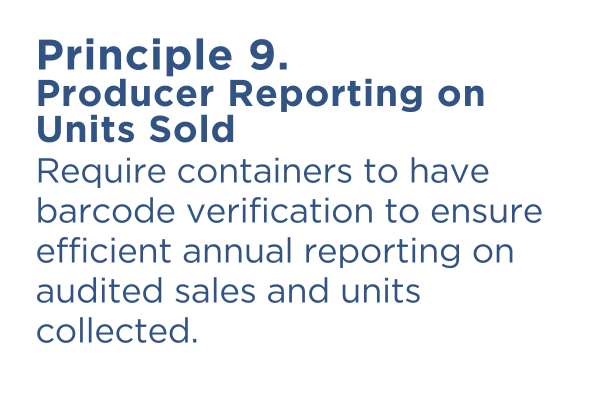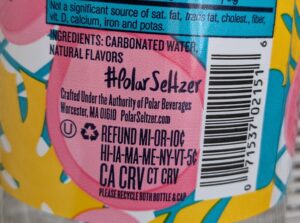A hearty hello to you!
Welcome to the ninth issue of Bottle Bill Common Ground — a limited-series newsletter from Reloop North America highlighting evidence-based guidance for legislators, policy makers, industry, and advocates working on bottle bills. (If you haven’t read our first eight issues, you can do so here.) This issue focuses on Principle #9 of the 10 high-performance principles for an effective deposit return system (DRS), the keystone of a better bottle bill.

One powerful tool of a modernized DRS is its capacity to track every single beverage container as it makes its way through the system. With producers required to put identification on each container, one can know exactly what’s going out, what’s coming back, and what ends up where.
Tracking data alone is not the answer. But when data is analyzed and translated into reports, the system operator can not only accurately measure waste but also reduce fraud, demonstrate transparency, share results with the public, and enable higher redemption rates for the beverage containers that first went out the door.
How is Principle 9 put into action? First, unique markings called a barcode are placed on each container (remember Principle 8’s focus on product design and labeling?). The producer then should register it via a process that includes marking containers with a standardized deposit logo and submitting its barcode to the system operator.

The system operator enters that producer’s information into a central database that contains barcode and registration information for all beverage container products in the system. During this process a container’s unique markings are checked to ensure it can be identified later using automated collection or counting equipment like a reverse vending machine (RVM).
The producer reports the number of each product sold into a state, with its associated barcode, which ensures that all containers returned are counted and verified. This rigorous registration and reporting process:
- Prevents containers from being fraudulently returned multiple times
- Enables close monitoring of return volumes through return locations to help identify any irregularity in numbers
- Allows for transparency on return rates through retailers and redemption centers such that the 90% collection rate can be accurately verified (see Principle 2: 90% Collection Rate)
- Can be used to charge producers an accurate producer fee (see Principle 5: Producer Funded).
- Can be used to accurately pay handling fees to return locations (see Principle 6: Fair Pay for Service Providers)

Applying Principle 9 drives a fairer, more transparent and fraud-proof system. It also works in the favor of different DRS stakeholders in different ways:
- For participating producers, universal registration levels the playing field, ensures deposits are applied at the point of sale, and enhances transparent flow of containers.
- For consumers, retailers, and collection point staff, the unique markings help identify containers eligible for a deposit refund.
- For government agencies overseeing the DRS, the data-registry captures new products, thereby minimizing “free riders” — system containers sold onto the market without a deposit allowing brand owners to avoid financial responsibility for their management.
Thanks for reading! We encourage you to share this newsletter widely with those who want or need to know about these principles and practices. Working together from a common ground of knowledge, we can move good bottle bills forward. Sign up here to get these blog posts as emails.
